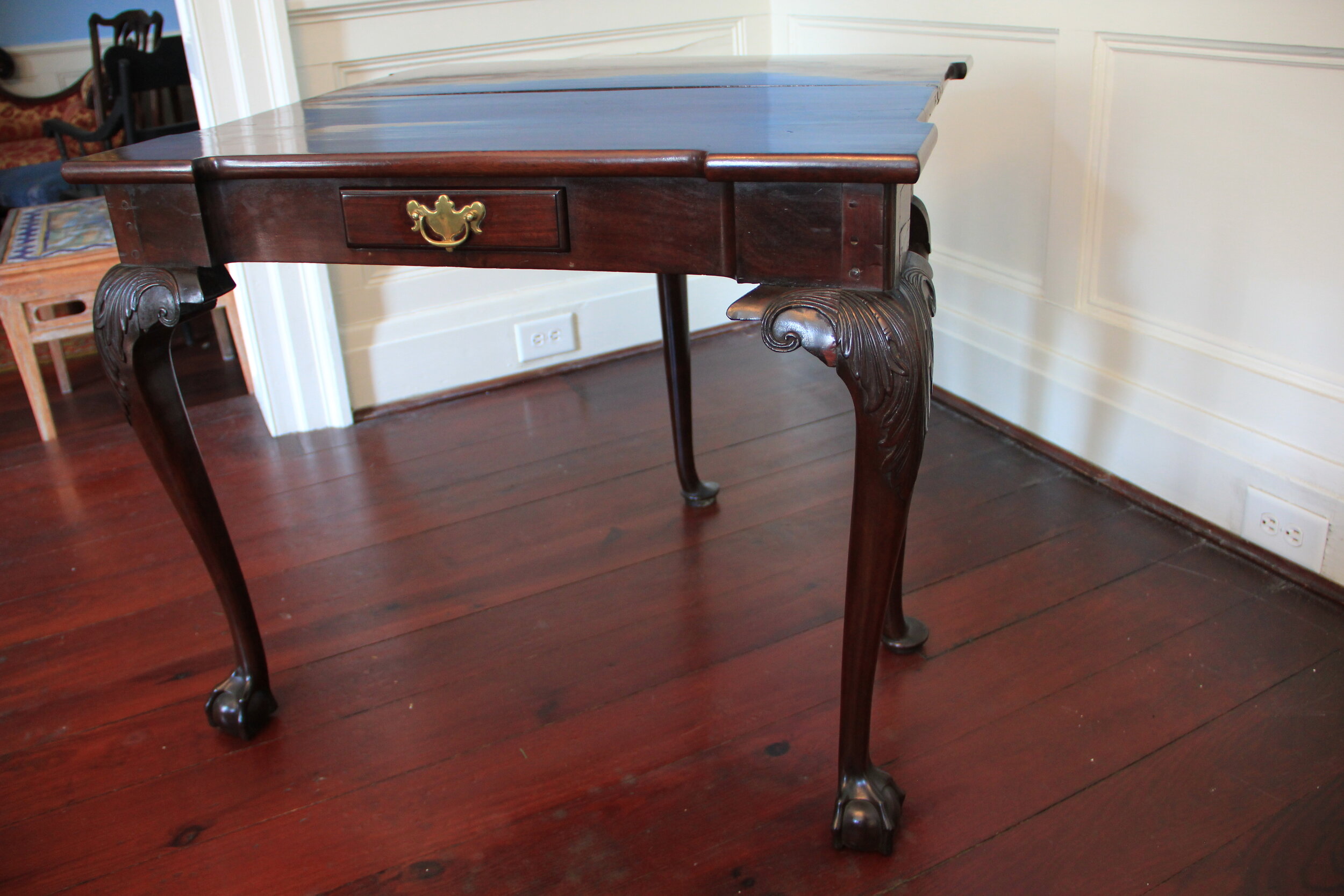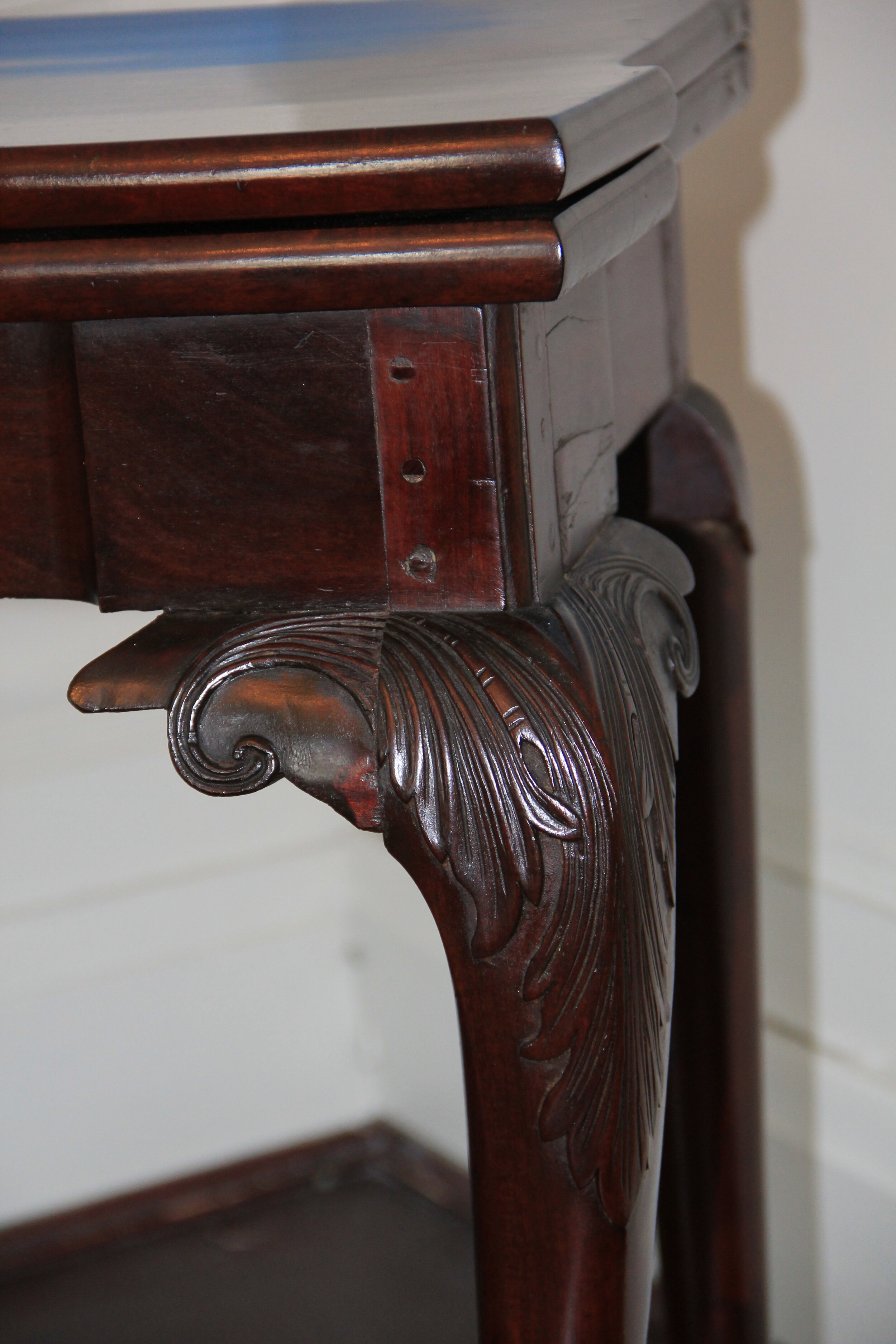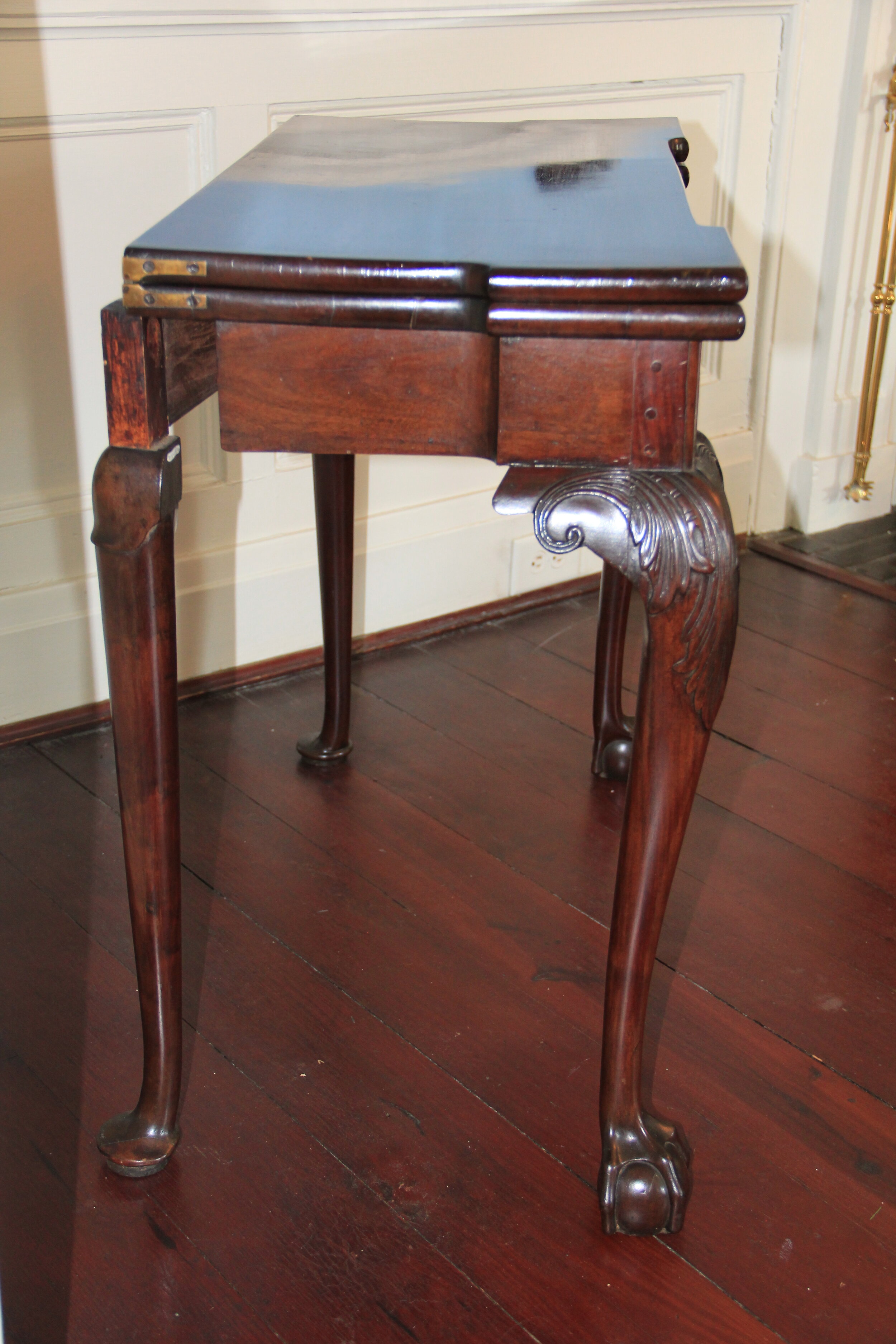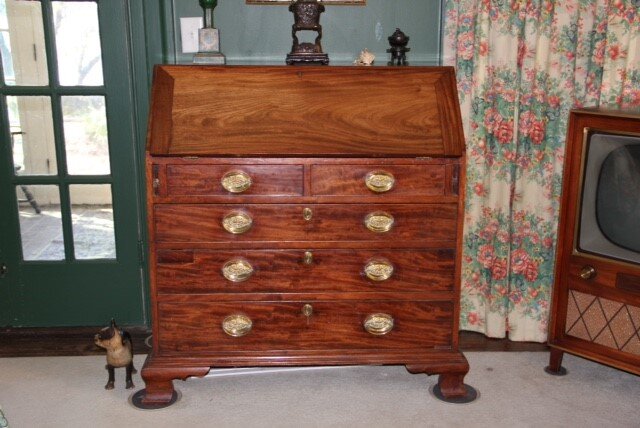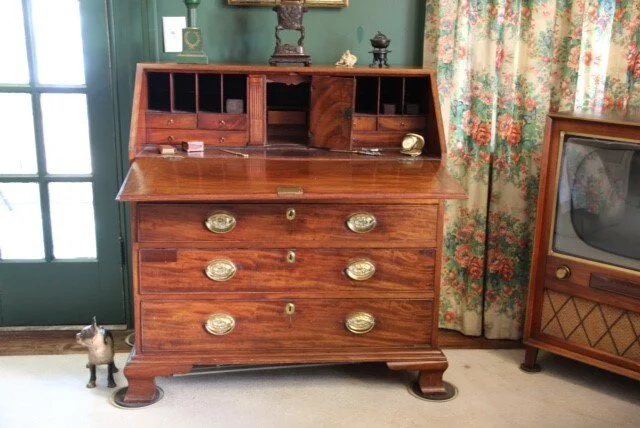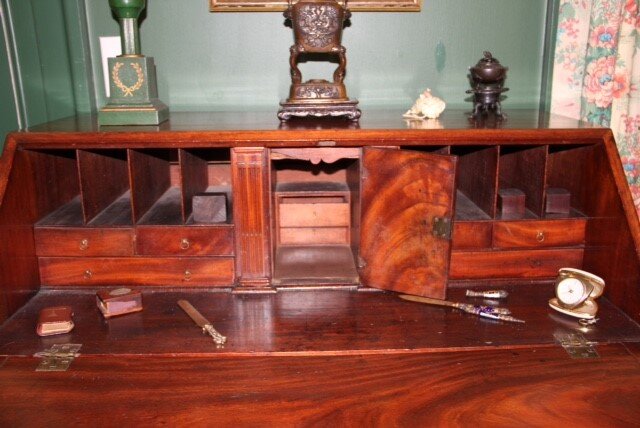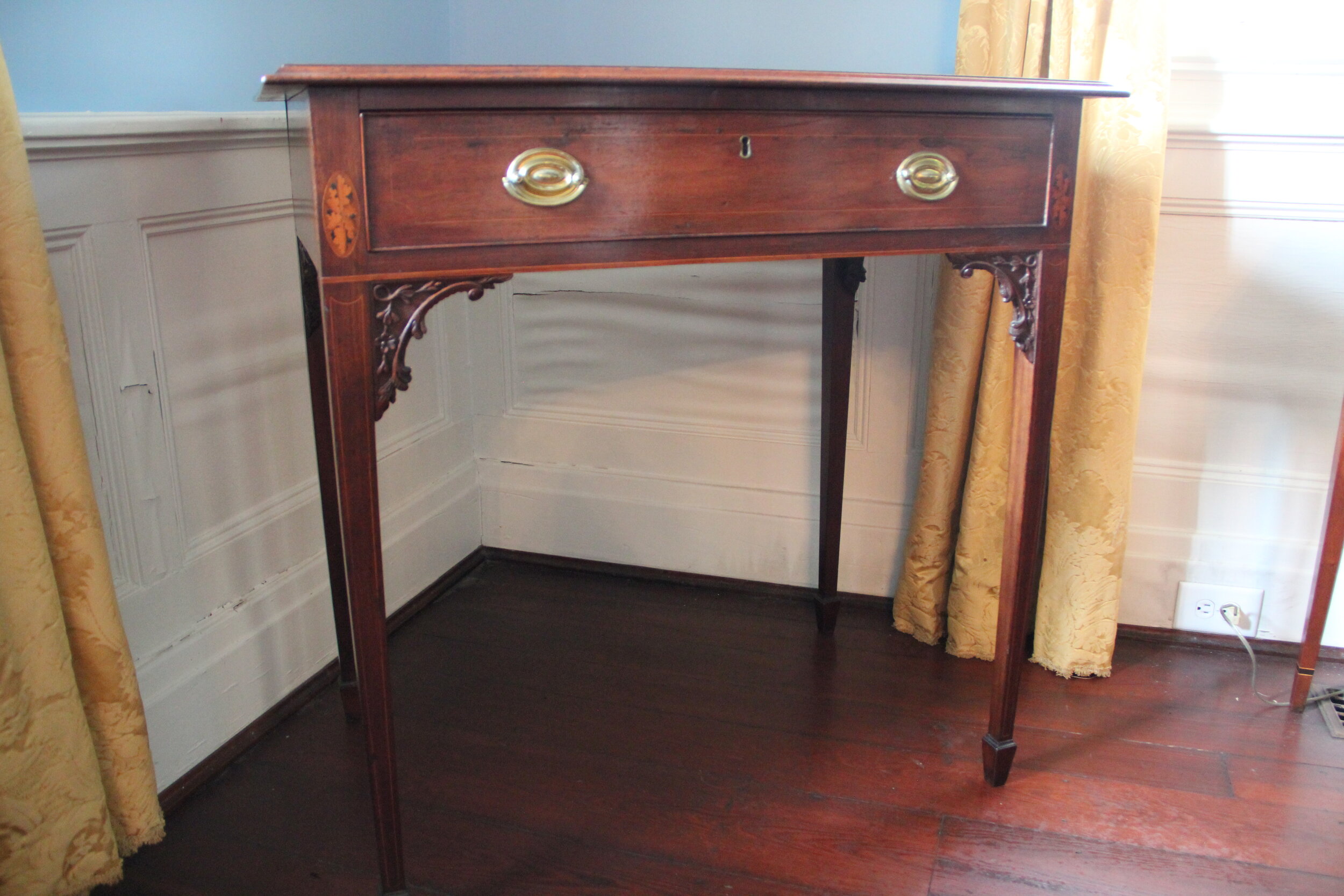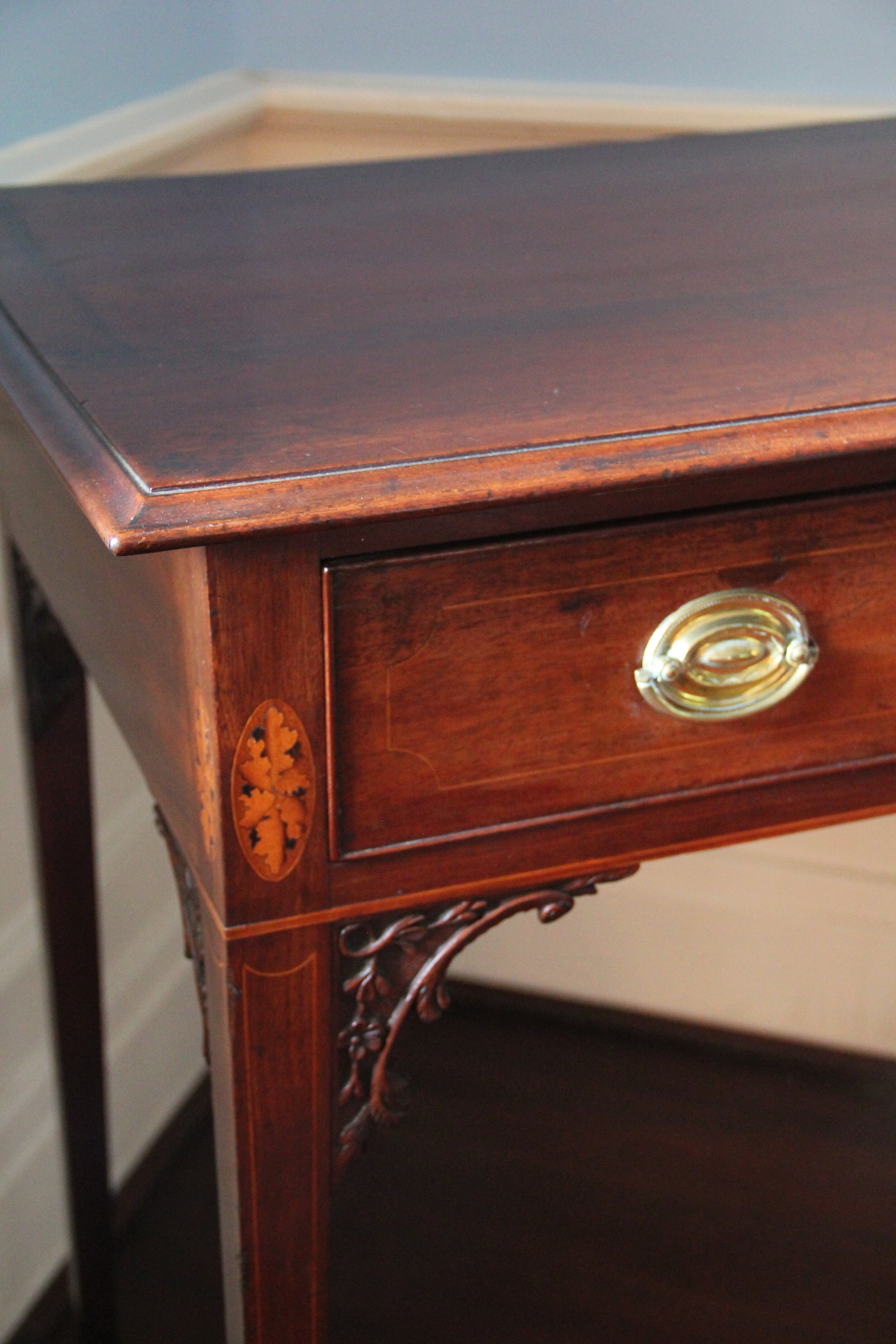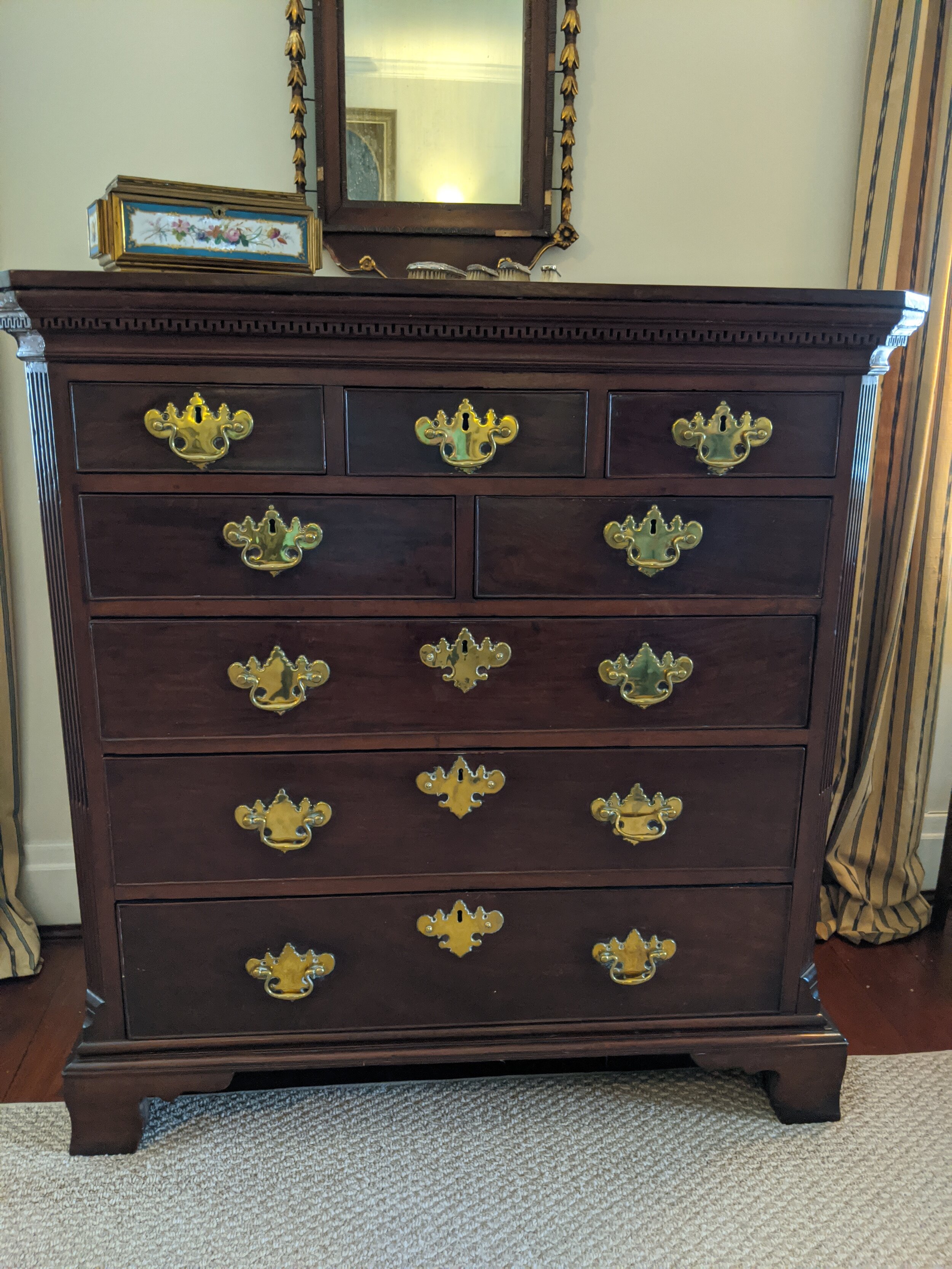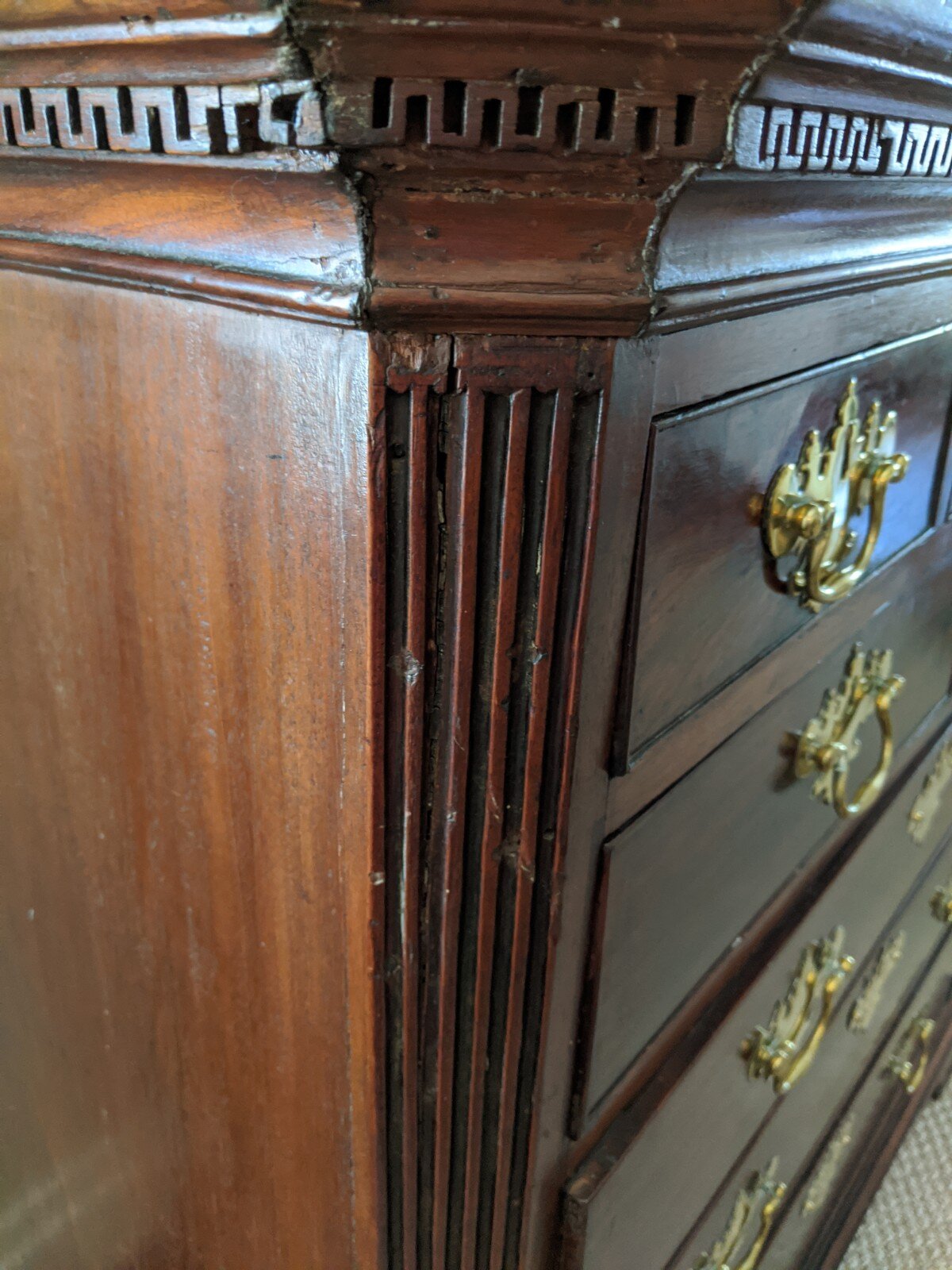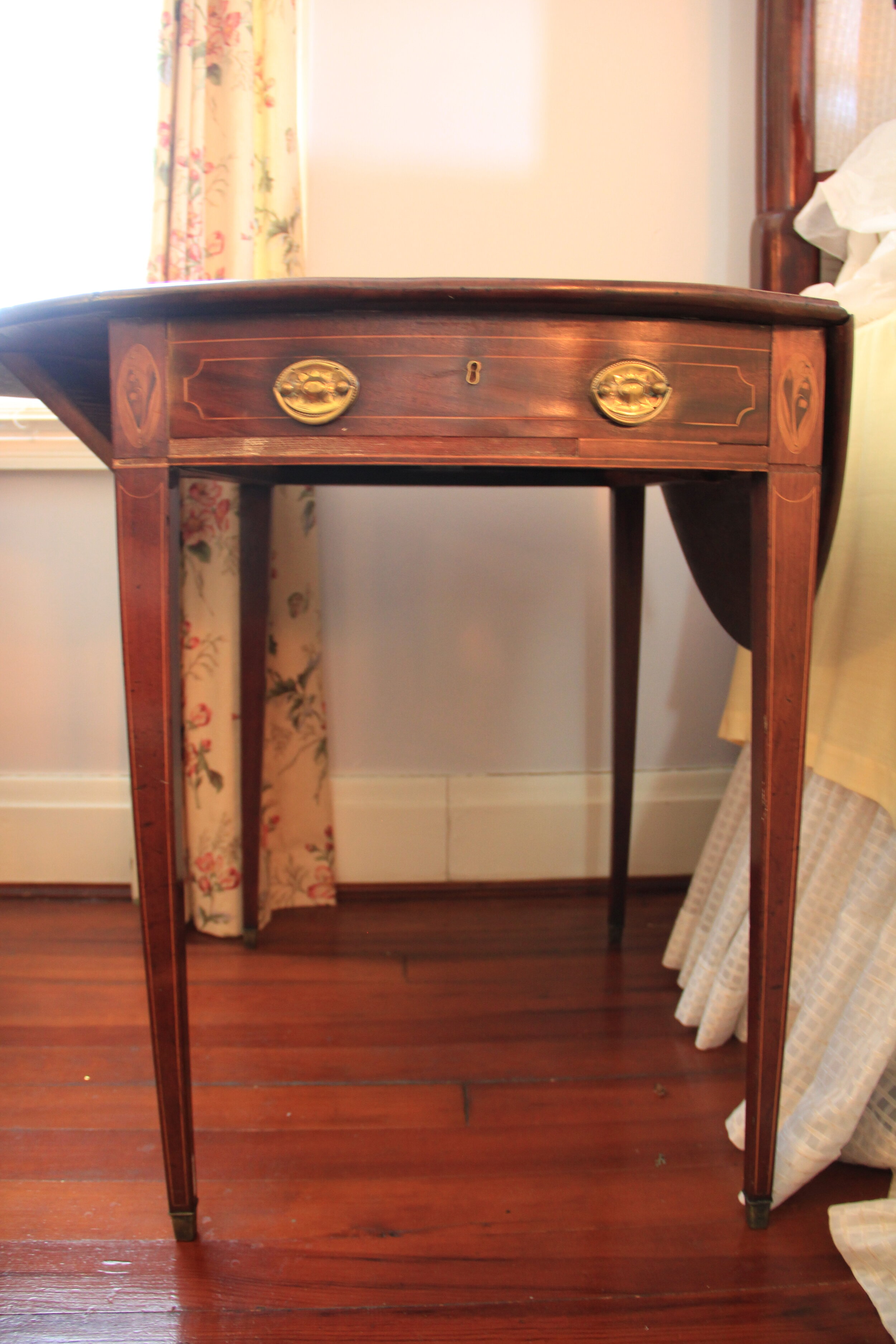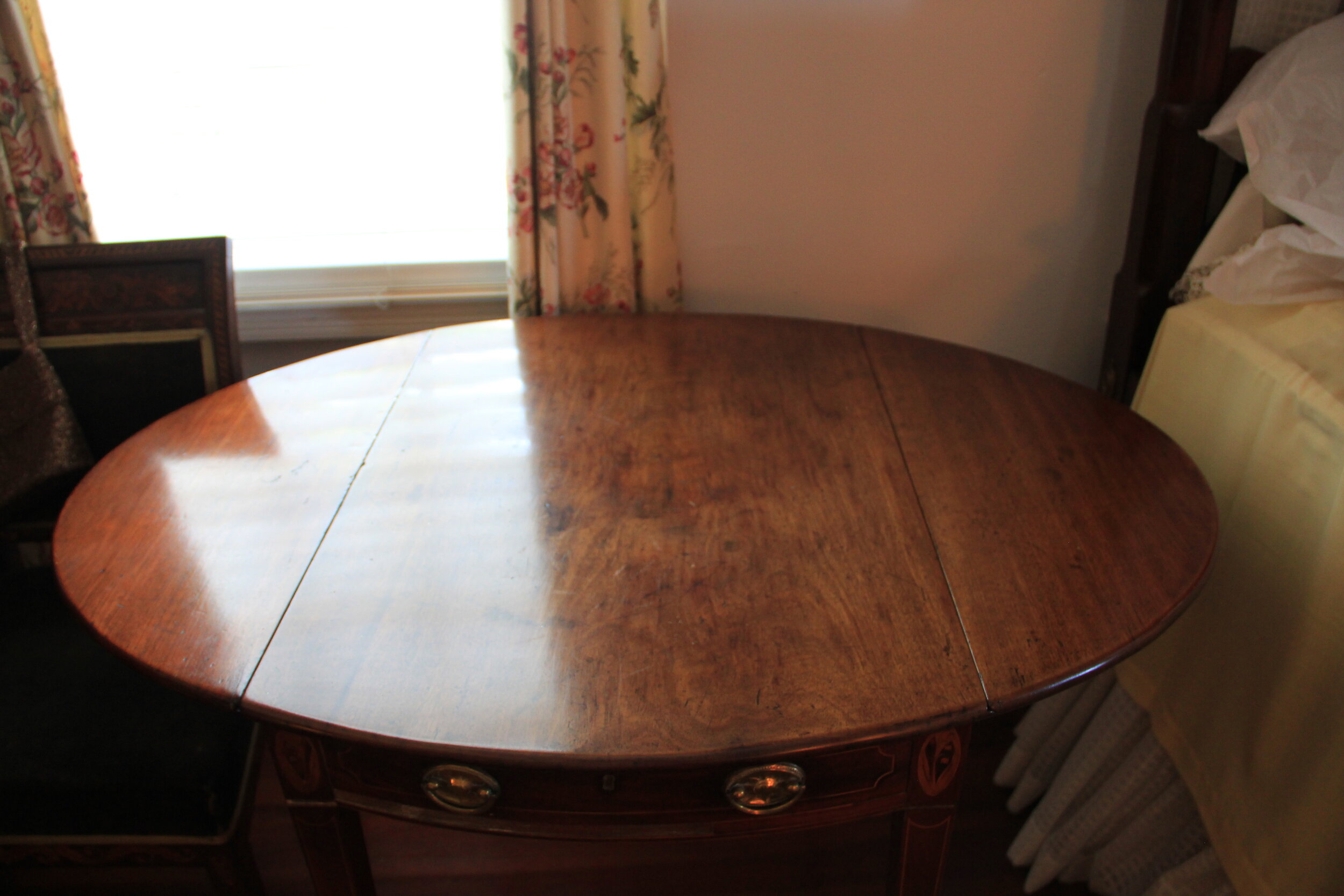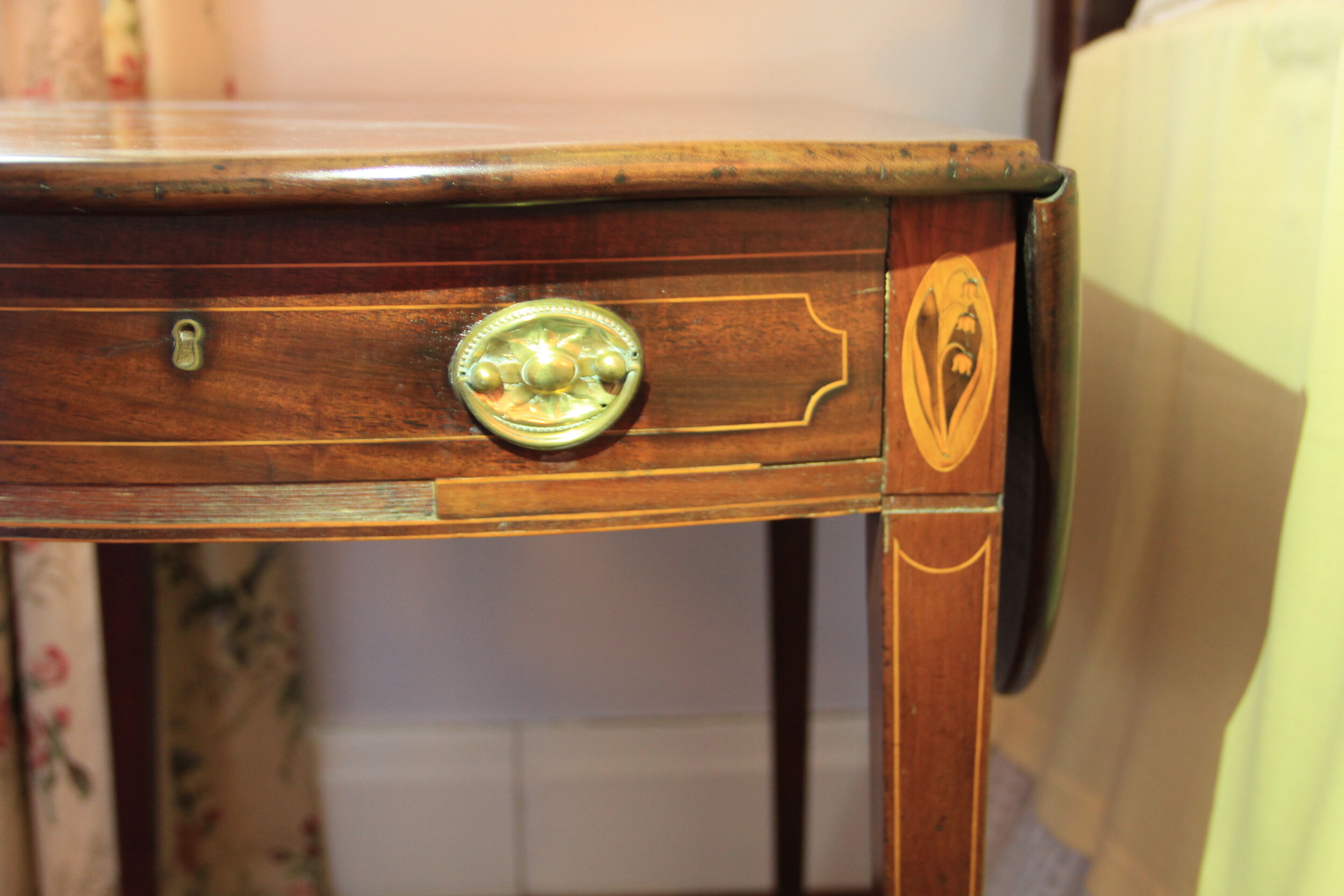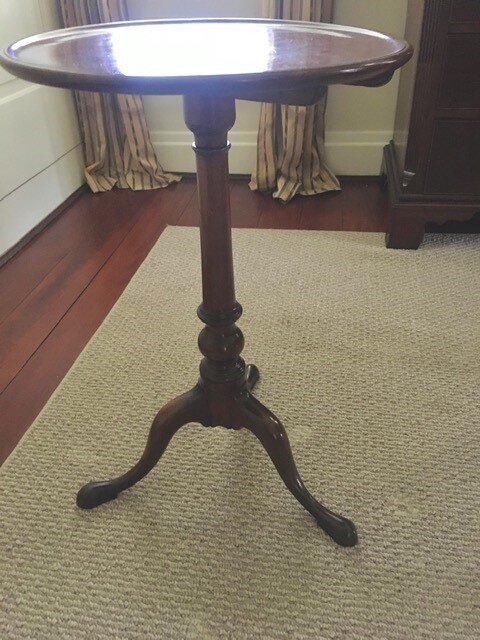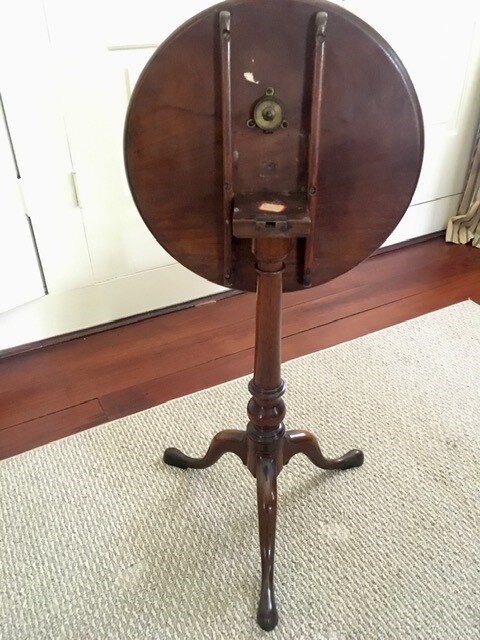Charleston-Made Furniture at the Kaminski House Museum
By Jennie Holton Fant
A small collection of 18th century Charleston-made furniture takes pride of place among the antiques in the Kaminski House Museum.
Charleston once served not only as the commercial, political, legal, and social hub of the lowcountry region, but among the city’s cultural contributions was the crafting of high-quality furniture by local cabinet-makers. From its earliest period, Charleston was the epicenter of cabinet-making as cabinet-making followed evolving lines of commerce between England and its wealthiest North American colony. The first documented joiner who made furniture in Charleston was James Beamer, working in 1687. From 1700 to 1825 nearly 250 cabinet-makers were “plying their trade in Charleston,” not including the carvers, gilders, turners, and chair makers who worked in conjunction with the cabinet-maker. Nor does that number include the many enslaved craftsmen cabinet-makers used in order to meet growing demand. During the first twenty-five years of the 19th century the work of the Charleston cabinet-makers reached its peak, and the year 1825 marks the end of an era. Thereafter furniture lost much of its 18th century delicacy and became heavy and cumbersome.
The Charleston-made furniture at the Kaminski House was professionally appraised in the years after Julia Kaminski left her fully furnished house to the City of Georgetown in 1972. Although it is difficult to identify the specific cabinet-makers, the six Charleston-made pieces date between circa 1760 and 1800 and include both “high style” and utilitarian pieces. The principle wood of all six is mahogany. Although the earliest Charleston cabinet-makers used wood native to the region, due to Charleston's proximity to the West Indies, mahogany became the predominant wood that was used. In 1740 mahogany was being brought from islands in the West Indies into the port of Charleston in such quantities that the duty on it was repealed. It was cheaper to transport a mahogany log by water from the West Indies than it was to haul a log of some native wood a few miles by cart. The secondary woods used on the six Kaminski House pieces are native woods and include cypress, popular, ash, red cedar, and white pine.
Due to Charleston fires, wars, weather, the earthquake, wear, dispersal to heirs living elsewhere, etc., comparatively few pieces of Charleston-made furniture have survived. And still there remains a difficulty in positively identifying the provenance of a Charleston-made piece in that Charleston works usually bear no labels. By contrast, many of the pieces produced by Northern craftsmen have retained their original labels, which makes it easier to identify pieces by the same craftsman, or to define characteristic styles of artisans. Further, because Charleston cabinet-makers so deftly imitated English styles, Charleston-made furniture is often mistaken for the work of English master craftsmen and was wrongly attributed throughout most of the late 19th and 20th centuries.
However, Charleston-made furniture remains much sought-after for its quality craftsmanship. The Kaminski House’s Charleston-made pieces are among the Museum’s most prized possessions.
For more on Charleston-made furniture, see E. Milby Burton, Charleston Furniture, 1700-1825 (Charleston, S.C., Charleston Museum), 1955.
